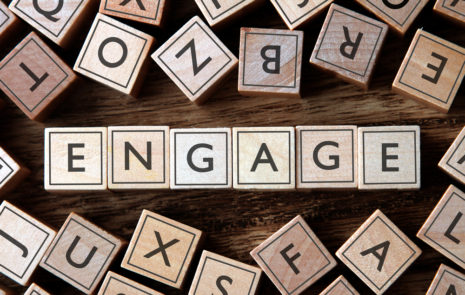
“How to measure efforts of individual pieces of content vs. overall success of a content marketing effort?”
Content marketing measurement.
A marketer at ExxonMobil asked this question. It ranks among marketers’ Top 100 Questions on content marketing.
When you consider how to measure your content marketing – individual pieces of content vs. the overall success of content marketing:
- Be clear about your purpose in measuring.
- Strike the right balance in measuring programs, campaigns and pieces.
- Use tricks that improve measurability of individual pieces.
What jobs does content marketing measurement need to do?
Be crystal-clear with yourself, your boss and your internal clients about the purpose of measurement. You can use measurement to get different jobs done. Which job is key?
What is your purpose in measuring content marketing?
- Improve the quality of your existing content?
- Enlighten marketing by testing and learning from experiments?
- Increase business results such as leads, deals, customers, subscribers and sales demonstrably?
All of these are valid purposes for measurement, but each requires a different approach. You may choose to use one, two or all three types of measurements.
1. Improve the quality of existing content
Here are 5 ways you can measure and improve the quality of your existing content:
Measure message consistency.
Wherever you tell your story – in digital, print or live media – your message needs to be completely consistent.
Why? Because neuroscience shows that only consistent messages have a chance to break through to audiences. Here are 7 ideas to help you improve your message consistency.
Test the scannability of content.
On average, users read only about one-fourth of a 111-word text on a webpage, says Nielsen-Norman Group. As text length goes up, the percentage read goes down.
That’s why you need to give readers pictures, headlines, subheads, charts, graphs, bullets and elements they can scan for answers. Using a heat map will help you see how a particular page performs in the eyes of readers.

These are the elements readers regard most, says CXL Research:
- 97% read the headline
- 98% glance at the subhead
- 91% read the image caption
- 60% skim the article
- Banner ads get <1.5 seconds of attention.
Check the readability of text.
Use Microsoft Word readability tools built into spell check, or a website such as readabilityformulas.com, to test readability of text.
The lower the grade level, the larger the audience who can read it and comprehend it. That’s especially important if you address global audiences in English.
Measure headlines for emotional marketing value (EMV).
Headlines that break through are emotional, ask questions, include numbers and use power words. Test the headline EMV on a scale of 0 to 100 at aminstitute.com/headline/index.htm. Set a target score for headlines, then write and test headlines until you meet that target. Then test subheads too.
Audit content to find out how competitive it is.
Choose your top 3 to 6 competitors and appoint a manager or consultant to discover, compare and analyze all this content.
Content audits show how competitive your content is, identify “white spaces” you can address that competitors don’t, enable the development of differentiated content, and help you outsmart competitors.
2. Content marketing measurement to conduct content experiments
If you have limited resources for measurement, you may need to choose whether to measure the whole content marketing program or certain pieces of it.
Job 1 is to measure the entire content marketing system.
To do so, round up these metrics:
- Website and SEO metrics such as: search rank, keywords, website traffic, time on a webpage, bounce rate, conversion path. See “Content Marketing Metrics: 10 Easy Ways to Measure Effectiveness,” a blog by Andy Crestodina.
- Email metrics such as subscribers, deliveries, open rates, click-through rates. See “Email Analytics, The 6 Email Marketing Metrics and KPIs You Should Be Tracking,” a blog by Lindsay Kolowich.
- PR metrics such as share of desirable coverage, conversions, cost-effectiveness. See “Katie Payne’s 5 Data Points You Need in Your PR Dashboard,” a blog by Steve Goldstein.
- Event metrics such as new leads, social media reach, new customers, customers reached with product demonstrations. See “The 4 Most Important Metrics for Measuring Your Trade Show Marketing ROI,” a blog by Rachel Sprung.
- Social media metrics such as followers, likes, shares, user-generated content. See “7 Social Media Metrics that Really Matter – and How to Track Them,” a blog by Sarah Dawley.
- Brand value, as calculated under UK accounting rules. See “Brand Valuation – What It Means and Why it Matters,” a white paper from Brand Finance.
Content Marketing Measurement
To sum up, measure everything that’s feasible and practical to measure. If you’re thorough, you may round up 30 or more measures.
Share all of these metrics with the entire marketing team regularly – monthly or quarterly. When sharing metrics, ask individuals to connect the dots and describe trends they see. Then, ask them to hypothesize on why particular measures went up or down.
Once you hear competing hypotheses, you can test them with A/B tests. Experiments and testing will enable your future content to outperform today’s content as you continuously measure, hypothesize, test and learn together.
Through this process, you’ll find out which measures are most important. In particular, you’ll find out which ones best foreshadow future growth in revenue, sales and customers. Then you can focus on managing a smaller set of metrics – 5 or 10 – that enable you to fine-tune marketing.

Job 2 is to measure content marketing campaigns.
Since customers consult 3 to 8 pieces of content on carefully considered purchases, measure to show how your content marketing campaigns move the needle. Here’s how to measure a content marketing campaign.
For example, you can measure in a greenfield – a market where there’s been no marketing before. Or you can measure in a brownfield – a market that’s been neglected for the past year. By introducing content marketing into a greenfield or brownfield market, you can get a clean read of what content alone can accomplish.
If you have measured the whole system plus campaigns and you still have measurement resources left, then measure individual content pieces.
Job 3 is to measure individual pieces of content.
The danger is, a piecemeal measurement approach can render a distorted, misleading picture. So don’t measure individual pieces unless you are also measuring the whole system and campaigns.
Here are ideas from Heidi Cohen for how to measure results from ungated content in an unobtrusive way. For example, you can insert a contextually relevant call-to-action (CTA) with a tailored UTM (urchin tracking module). Here’s how.
Another tip: avoid snapshot measurements. Content marketing takes time to deliver results, usually measured in months or years.
You seldom learn much from a measure of marketing performance over a limited time period like one month or one quarter. Marketing measures work by revealing patterns that emerge over time.
The best marketing measures are performed consistently for at least 2 years, plotted as a fever chart comparing year 1 with year 2. Why? Because a 2-year fever chart enables you to see how seasonality affects overall results.
3. Measure to increase business results
Measurement for executives and internal clients takes a different emphasis.
Measure return on marketing investment (ROMI). ROMI is a narrower measure than ROI, and it’s more precise because it excludes variables not necessarily under marketing’s control (such as product development expenses).
To calculate your return on marketing investment use this formula:
(profit from sales growth – marketing expense)
Marketing expense
For example, say that successful marketing increases sales by $1 million and produces an additional profit of $100,000. Whether that was a good investment for the company depends on the amount of marketing expense:
- If marketing expense was $200,000, the company got a negative ROMI of 50%. That is, each $1 invested in marketing produced 50 cents in additional profit.
- If marketing expense was $100,000, the company broke even. The ROMI is zero. (Note: companies that are entering or building a new market consider that a good investment.)
- If marketing expense was $50,000, the ROMI is 100%. Marketing produced $2 of incremental profit for each $1 invested in marketing.
- If marketing expense was $33,333, the ROMI is 200%. Marketing produced $3 of incremental profit for each $1 investment in marketing.
ROMI
ROMI sometimes leads to a mechanical mindset: the higher the profit from sales growth, and the lower the marketing expense, the better.
Careful! Don’t follow that mechanical mindset out the window. Cutting marketing resources repeatedly can lead a brand into a death spiral.
To simplify the success measure you share with executives, find a “rule of thumb” that works for marketing in your company.

For example, I worked with a chief financial officer (CFO) to come up with a simple marketing rule of thumb. For each additional $1 in marketing expense, the Marketing Department needed to produce $3 in additional revenue. That’s what it took for our company to achieve profitable incremental growth.
This simple rule of thumb guided our marketing team on how to make profitable investments in marketing. Everyone in marketing understood exactly what we needed to do.
That’s what marketers need most – a success measure everyone inside and outside of marketing can understand.
Marketing is successful whenever it helps the company reach its objectives and goals – one of which is a financial return. Other valid business objectives such as brand awareness, customer retention, quality of user experience, and customer satisfaction do not get measured in a ROMI calculation – yet they remain crucial. Which is why measurement can get so complex.
The right things to measure in marketing must connect directly to the CEO’s and company’s objectives. That’s the key to finding marketing metrics executives will heed and respect.
Present these metrics as evidence that content marketing is working. For executives, make the results quick and easy to understand: boil them down to a 1-page report or 1 slide that builds.
The attribution problem arises
Even a very good measurement system may suffer from attribution error. For consumer marketers, the number one frustration in measurement is not being able to attribute how much of sales sprang from content versus other marketing tactics. Here’s a blog on attribution modeling.

More about the Attribution Problem
This problem still haunts marketers. One example of attribution error is when you know that $100,000 in additional profit was generated, without knowing exactly which marketing activities led to that growth. To work around the attribution problem:
- Some companies attribute results to the “first touch,” the first proven touch point where a customer interacted with the company (such as an email or web page).
- Other companies attribute results to the “last touch,” the last thing a customer did before making a purchase (such as a white paper download).
- But neither the first touch nor the last touch can tell the whole story since each marketing and sales touch point helps move the customer forward to a purchase.
- Key touch points such as word of mouth and emails forwarded inside a company are invisible to companies. There’s not a good way to measure them.
Attributing Marketing Success
It’s rarely possible to attribute marketing success to any one touch point. Attributing sales to only the last touch point is like giving all the credit to a basketball player who scores a basket, without taking into account the other players, the offense’s execution or the great rebound that made a basket possible.
You may not always be able to explain exactly which part of marketing produced a given sale. That’s why it’s better to measure a whole system, and then a campaign, before you measure individual tactics.
Remember, the point is to learn how to grow sales profitably over time – not to create the perfect measurement model for its own sake.
If you have only a limited time to prove the effectiveness of content marketing, choose products with short sales cycles – such as 1 to 3 months. Why?
Because, if you choose a product that takes 18 months to close a sale, there’s no way content marketing can possibly meet expectations in the first year. Few companies exhibit that much patience.
As you decide how to measure your content marketing – whether to measure individual pieces of content vs. campaigns vs. the overall content marketing program:
- Be clear about your purpose in measuring.
- Strike the right balance in measuring programs, campaigns and pieces
- Use tricks that improve measurability of individual pieces.
Happy measuring!
“How to measure efforts of individual pieces of content vs. overall success of a content marketing effort?” is one of marketers’ Top 100 Questions on Content Marketing. Here are the answers.






